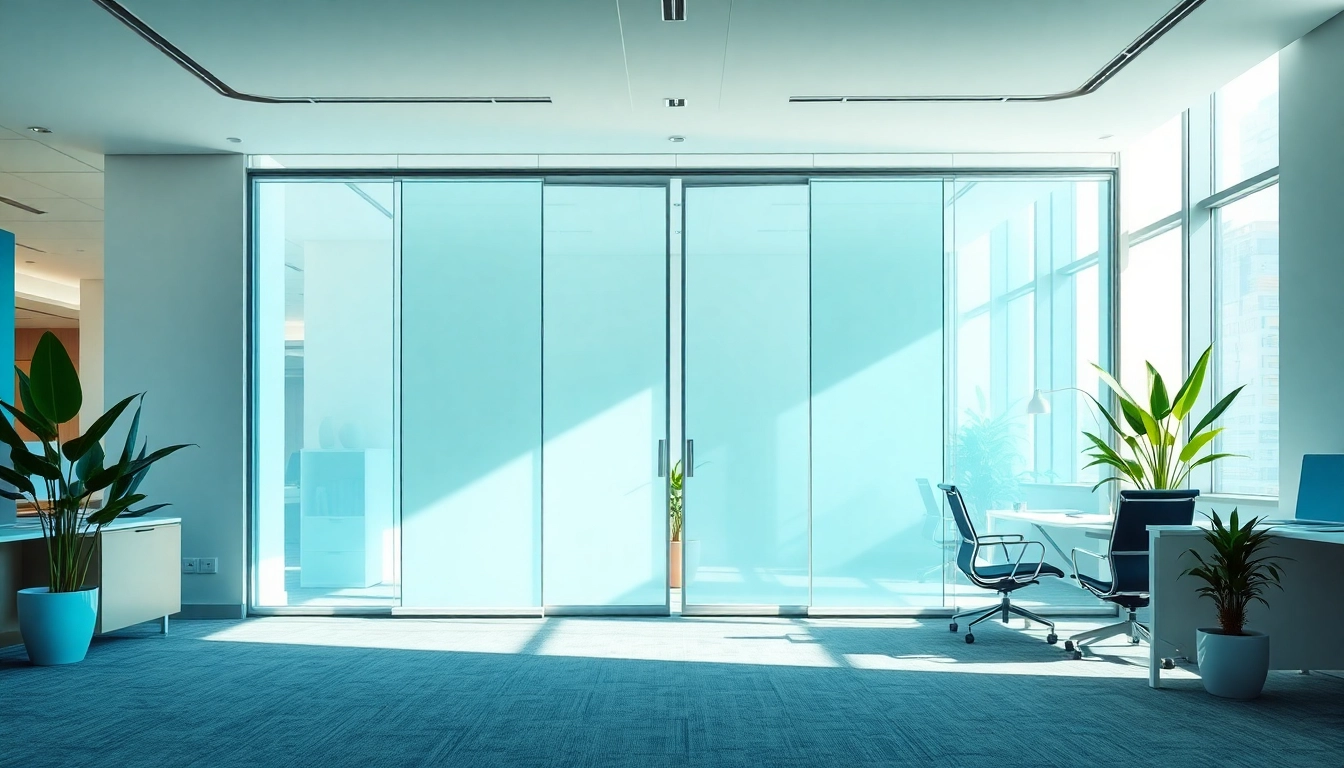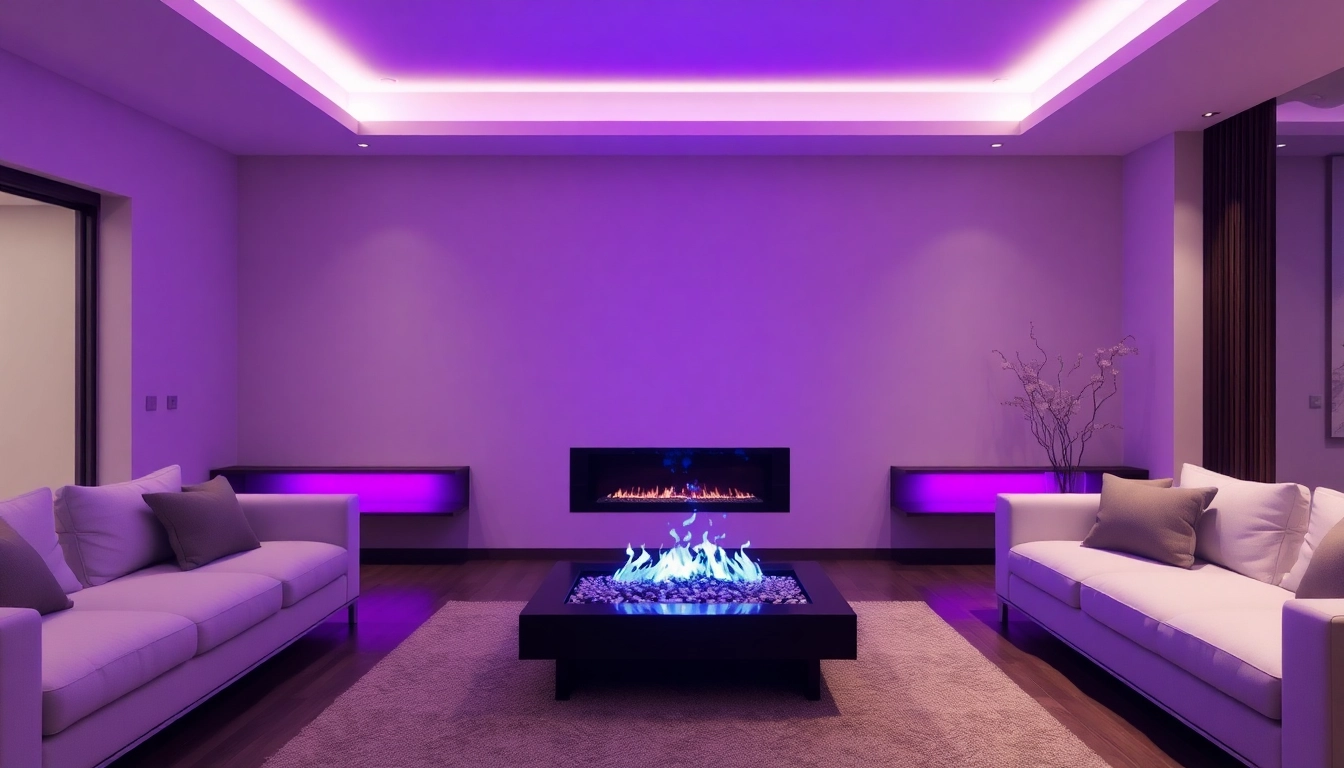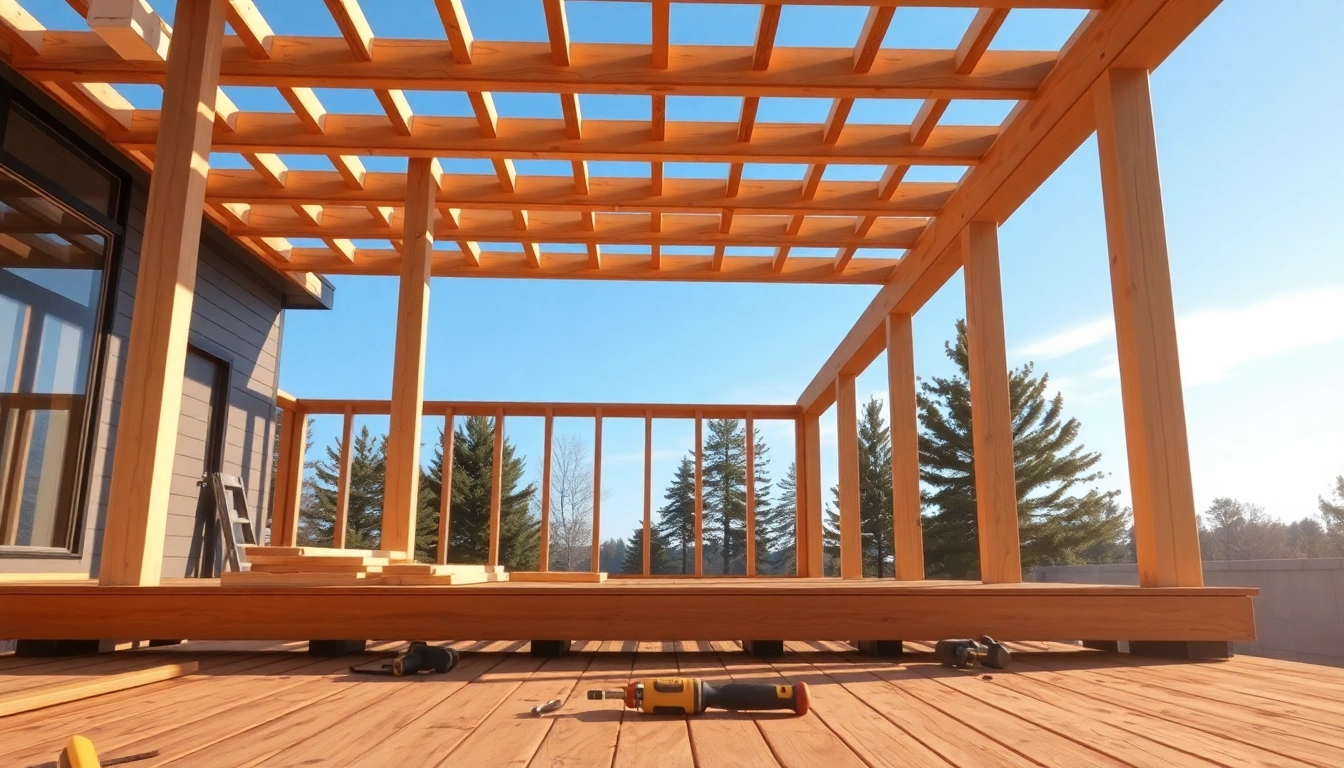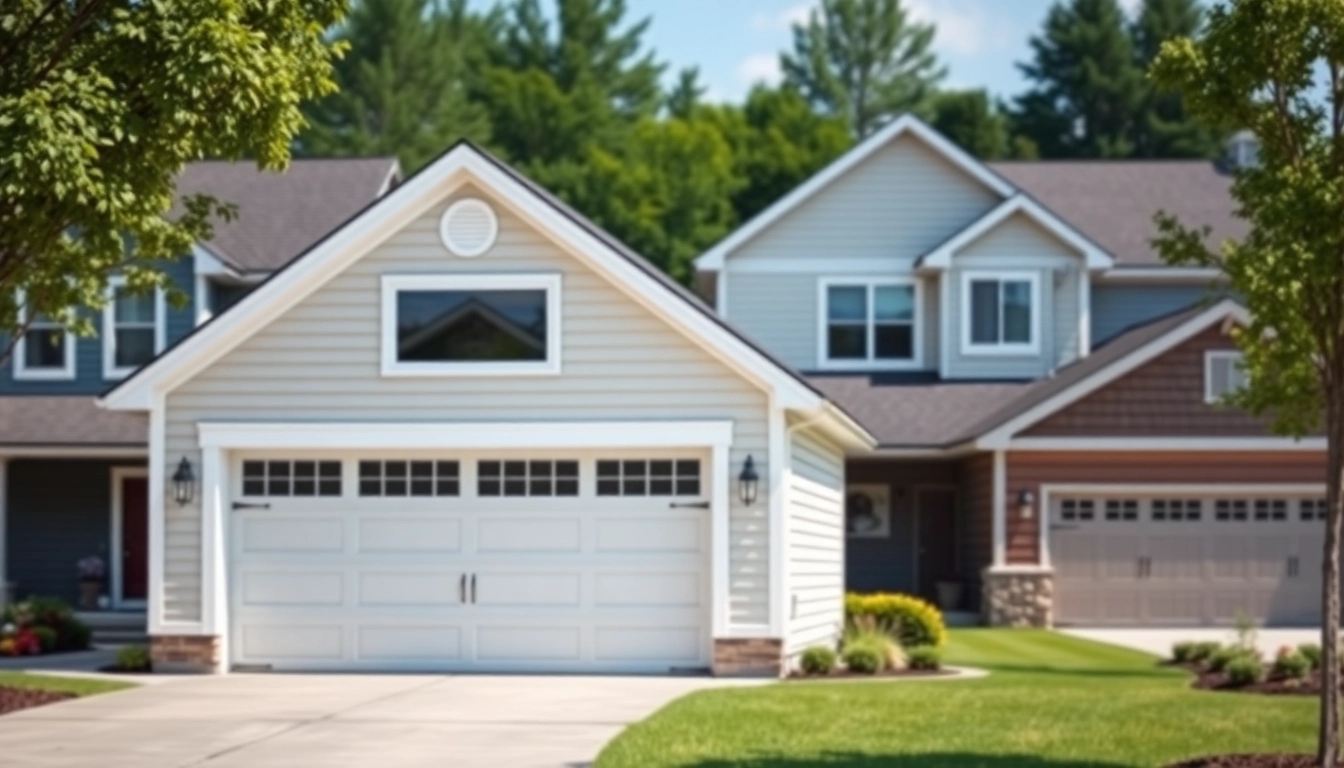Understanding Folding Partition Walls
Folding partition walls are innovative solutions designed to optimize the use of space in various environments. Whether in homes, offices, or commercial spaces, these dynamic walls facilitate flexibility in design and function. By utilizing the concept of movable walls, businesses can adapt their environments to changing needs without requiring structural changes to the space. The Folding Partition Wall exemplifies this adaptability, allowing for easy division or unification of areas. In this comprehensive guide, we will explore the fundamentals of folding partition walls, their benefits, applications, and best practices for selecting and maintaining them.
What is a Folding Partition Wall?
A folding partition wall is a temporary or movable wall system that can be opened or closed as needed. Structurally, these walls consist of panels that can be folded, collapsed, or slid to create flexible space management solutions. Unlike traditional fixed walls, folding partition walls offer the ability to transform areas quickly and efficiently, allowing different configurations according to the user’s needs. Typically made from lightweight materials such as aluminum, wood, or glass, these walls provide various aesthetic options while maintaining functionality.
Benefits of Using Folding Partition Walls
The introduction of folding partition walls to a space comes with numerous benefits:
- Space Efficiency: Folding partition walls allow for maximizing available space by enabling the area to be reconfigured instantly to meet specific needs. This is particularly beneficial in environments such as conference rooms or multi-purpose halls.
- Cost-Effective: By eliminating the need for permanent structural changes, folding partitions can be a more economical solution for space management, reducing renovation costs.
- Sound Control: Many folding partition walls are designed with soundproofing materials, allowing for greater privacy and reduced noise levels in multi-use spaces.
- Versatility: These walls can be customized in terms of materials, colors, and finishes, enabling them to blend seamlessly with any décor.
- Ease of Installation: Compared to building traditional walls, installing folding partitions is a much simpler process that can often be performed without specialized construction knowledge.
Common Applications for Folding Partition Walls
Folding partition walls are versatile and can be applied in various settings:
- Corporate Offices: They are frequently used to create temporary meeting spaces and conference rooms that can be adjusted according to the number of attendees.
- Educational Facilities: Schools and universities often utilize folding partitions to create adaptable classroom environments that can accommodate different class sizes and teaching styles.
- Hospitality Industry: Hotels and banquet halls benefit from folding partition walls to facilitate large gatherings or split spaces for different events.
- Health Clinics: In medical settings, folding partitions offer privacy for patients without the need for permanent walls, allowing for flexibility in layout as needs change.
- Residential Spaces: Homeowners can use partition walls to divide rooms, enhance privacy, or create multipurpose areas for entertainment or work.
Choosing the Right Folding Partition Wall
When selecting a folding partition wall, several factors need to be considered to ensure it meets your needs effectively and aesthetically.
Material Options for Folding Partition Walls
Choosing the right material is crucial as it affects durability, maintenance, and aesthetics:
- Wood: Offers a natural look and can be customized with finishes; suitable for high-end applications.
- Aluminum: Lightweight and sturdy, aluminum partitions are often used in commercial settings due to their durability and ease of mobility.
- Glass: Provides a modern aesthetic while allowing natural light to flow through spaces, enhancing the feeling of openness and connection.
- Fabric: Often used for temporary solutions, fabric-clad panels can provide flexibility and a softer appearance but may not offer the same level of sound control.
Considerations for Design and Aesthetics
The design of a folding partition wall should align with the overall aesthetic of the environment:
- Color and Finish: Consider the color palette and materials of the surrounding space. Customization can help the partition blend in or stand out as needed.
- Panel Style: Options range from solid panels to those with windows or decorative elements, allowing you to define the look and feel of the space.
- Access Control: Depending on the usage, consider whether you need integrated doors or other access mechanisms within your partition wall.
Sizing and Space Planning for Folding Partitions
Accurate measurement and planning are vital for the successful implementation of folding partition walls:
- Measure Existing Space: Ensure precise measurements of the intended area to accommodate the folding mechanism and ensure operation without hindrance.
- Plan for Movement: Consider how often and how quickly the wall needs to be deployed to avoid design choices that might obstruct traffic flow.
- Future Needs: Anticipate potential changes in space usage to select a system that can adapt easily to evolving requirements.
Installation and Maintenance of Folding Partition Walls
A successful installation and regular maintenance are critical for maintaining functionality and appearance over time.
Steps to Install a Folding Partition Wall
Installation generally involves the following steps:
- Preparation: Clear the installation area and ensure all necessary tools and materials are on hand.
- Framework Installation: Secure the top and bottom tracks to the ceiling and floor according to the manufacturer’s guidance.
- Panel Assembly: Attach the panels to the tracks, ensuring they move freely and align correctly.
- Final Adjustments: Test the movement of the wall, making any necessary adjustments to ensure smooth operation.
- Finishing Touches: Add any aesthetic features, such as coverings or finishes, to match the surrounding decor.
Maintenance Tips for Longevity and Performance
To keep folding partition walls in optimal condition, consider these maintenance practices:
- Regular Cleaning: Dust and clean the panels with appropriate cleaners to maintain their appearance and functionality.
- Inspect Mechanisms: Periodically check and maintain the tracks and hinges to ensure they operate smoothly without resistance.
- Address Damage Promptly: Repair any scratches or dents to prevent further issues that could affect performance or aesthetics.
Common Issues and How to Resolve Them
While folding partitions are designed for ease of use, issues can occasionally arise:
- Sticking Panels: If panels stick, check the tracks for obstructions or damage. Regular lubrication can help mitigate this issue.
- Alignment Problems: If panels are misaligned, adjustments may need to be made to the mounting hardware or guides.
- Sound Leakage: Ensure that you have chosen an appropriate model with adequate sound insulation for your needs. If sound transmission issues arise, consider acoustic treatments or additional barriers.
Comparing Folding Partition Walls to Other Room Dividers
When weighing options for room dividers, it’s important to compare the functionalities of folding partition walls with other alternatives.
Folding Partition Walls vs. Fixed Walls
Fixed walls offer permanence and usually more robust sound insulation but lack flexibility. In contrast, folding partition walls provide mobility and adaptability, allowing for versatile space management. The initial lower cost of folding partitions can also be attractive when compared to the construction of fixed walls.
Folding Partition Walls vs. Sliding Doors
Sliding doors are often more aesthetically pleasing but can limit the complete reconfiguration of spaces. Folding partition walls often provide a wider opening and involve less structural integrity, making them more versatile for varying purposes.
Cost-Effectiveness of Folding Partition Walls
In terms of initial outlay, folding partition walls tend to be less expensive than fixed constructions. The labor costs associated with installation are also typically lower. Looking at long-term value, their adaptability means that any changes in use do not require additional investment, enhancing their cost-effectiveness.
Maximizing the Benefits of Folding Partition Walls
To fully leverage the advantages of folding partition walls, consider the following strategies.
Enhancing Acoustics with Folding Partition Walls
If sound quality is a priority, choosing high-performance soundproof folding partitions is essential. Choose partitions specifically designed with acoustics in mind, as they typically feature additional insulation materials and design strategies to minimize sound leakage.
Innovative Uses for Folding Partition Walls in Different Spaces
Folding partition walls are not used just for standard room configurations; innovative applications include:
- Creating temporary art galleries or exhibition spaces that can be adjusted according to the number of pieces displayed.
- Turning a spacious family room into separate areas for games, media, or study.
- Designing multi-purpose rooms in community centers that can host varied activities from fitness classes to social events.
Future Trends in Folding Partition Wall Technology
The future of folding partition walls is evolving with technology. Trends to watch include:
- Smart Technology: Integration with automated systems that allow for voice or remote controlled adjustments.
- Eco-friendly Materials: Increasing emphasis on sustainable materials and manufacturing processes to appeal to environmentally conscious consumers.
- Advanced Soundproofing: The development of new materials that enhance sound insulation capabilities without compromising design.



